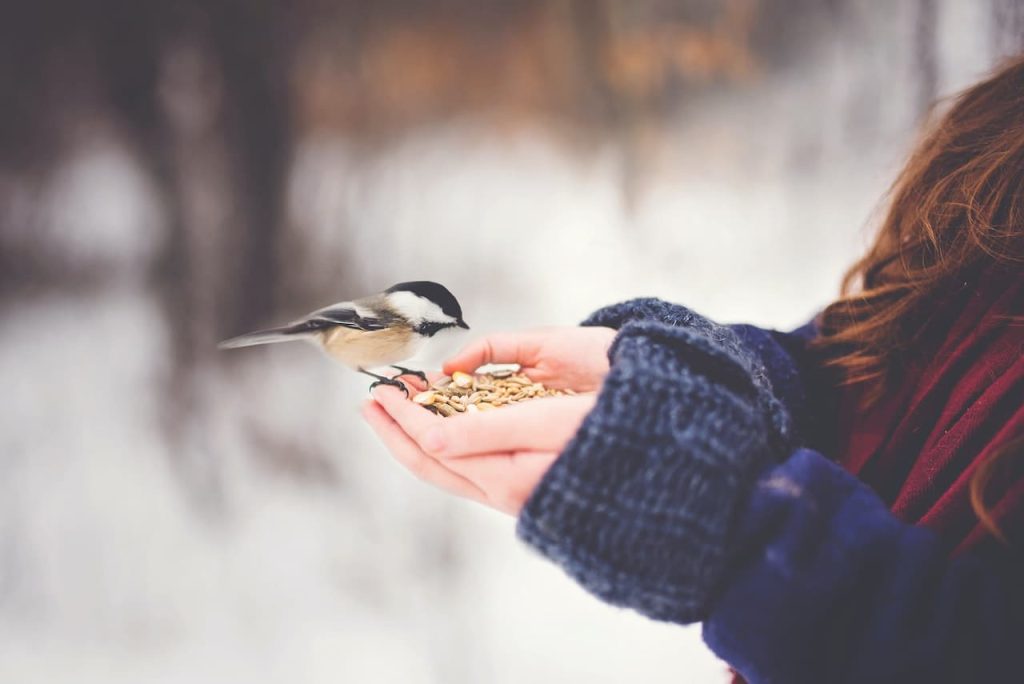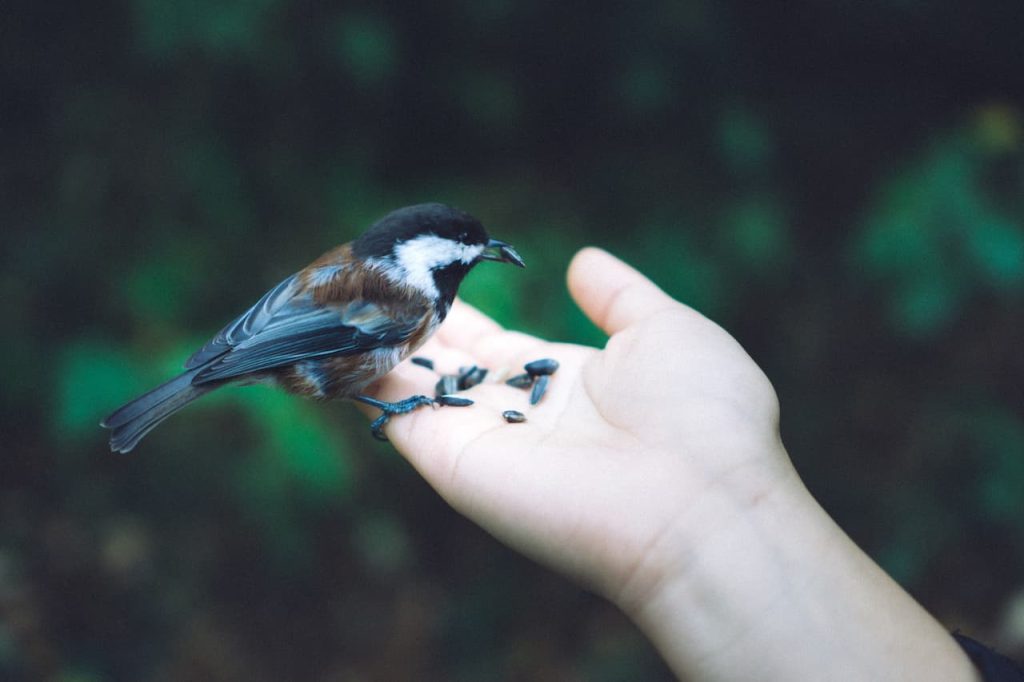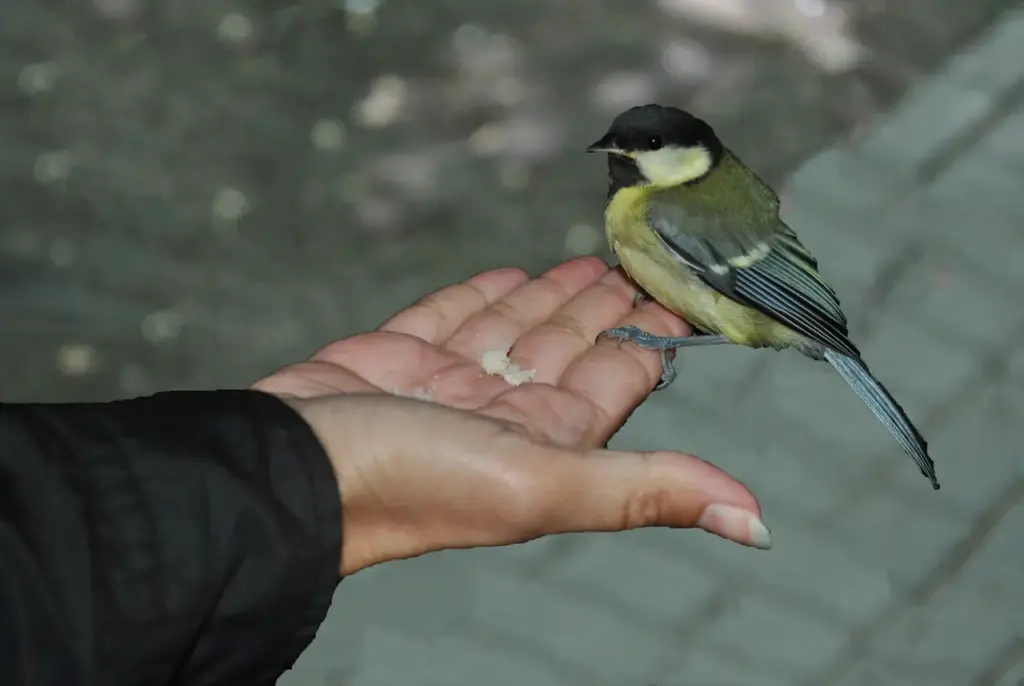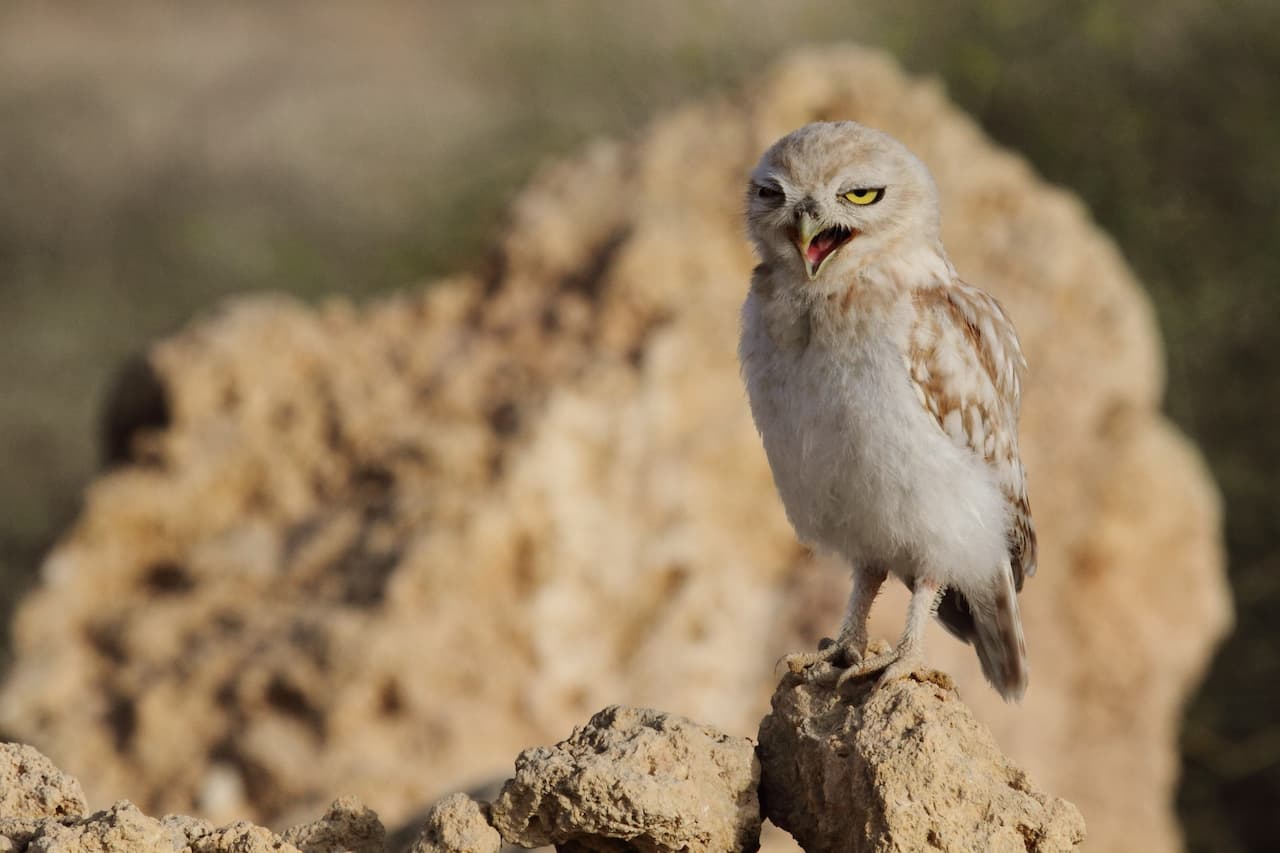Hand Taming Wild Birds
All About Hand Taming Wild Birds
The idea of hand taming a wild bird is appealing to many people. Who wouldn’t want their very own bird friend that happily flies down to hang out and eat treats from your hand? However, attempting to tame wild birds comes with many ethical concerns and potential risks that should be carefully considered first.
Is it Ethical to Try to Tame Wild Birds?
There are a few ethical considerations when it comes to attempting to tame wild birds:
Impact on the Bird’s Survival Skills
Birds that become accustomed to human contact and food sources may lose some of their natural survival instincts and abilities to find food on their own. This could negatively impact their ability to survive if they are released back into the wild or if their human caretakers suddenly disappear.
Potential for Injury or Illness
Getting close enough to interact with wild birds increases the risks of them becoming injured by accidental collisions or contracting diseases. Their immune systems are not adapted to the bacteria and viruses associated with humans.

Disruption of Natural Behaviors
Seeking human interaction and food takes time away from natural behaviors like foraging, migrating, choosing mates, and defending territories. This could lead to issues with the bird reproducing, competing for resources, and migrating properly.
Promoting Exploitation of Wildlife
Making a hobby out of hand taming wild animals promotes the idea that wildlife is there for human entertainment and exploitation. This can reinforce problematic attitudes towards nature.
Due to these concerns, most wildlife experts advise against attempting to tame and interact with wild birds for amusement. It risks their health and survival. Appreciating them from a distance is ideal.
However, some rehabilitation specialists do work closely with injured birds to nurse them back to health for release. This level of taming is acceptable when done properly by trained professionals with the goal of returning the birds to the wild.
Laws and Regulations on Keeping Wild Birds
In many areas, it is illegal to take in and keep wild birds without proper permits and licenses. It is critical to review all national, state/provincial, and local laws before acquiring a bird from the wild.
Some regulations that may apply include:
- Requiring special licenses or permits to rehabilitate sick/injured birds found in the wild. This ensures only qualified experts attempt bird rehabilitation.
- Bans on keeping native bird species captive without authorization. This helps protect local wild populations.
- Restrictions on capturing, trapping, or harming wild birds. This reduces the exploitation of natural populations.
- Mandatory vet exams, disease testing, and quarantine periods for capturing wild birds before introducing them to captive populations. This prevents the introduction of new diseases.
- Limits on the number and species of birds that can be kept as pets without permits. This prevents over-collection from the wild.
- Requiring owners to prove any birds brought into captivity were legally acquired from authorized breeders or suppliers, not captured from the wild.
- Federally protected species like migratory birds and endangered species cannot be kept in captivity at all without explicit permits.
The consequences for violating these laws can include heavy fines, confiscation of the birds, and even jail time for repeat or egregious offences. It is not worth the risks of skirting regulations just to tame a wild bird.
Risks and Dangers of Hand Taming Wild Birds
Attempting to hand tame wild birds has many associated risks beyond just being illegal. Here are some top dangers to be aware of:
Diseases
Wild birds can carry a variety of contagious and potentially zoonotic (transmittable to humans) diseases. Some examples include:
- Salmonella – Very common in wild birds and can spread easily to humans and other animals.
- Avian influenza – Bird flu viruses, which occasionally mutate into highly virulent strains.
- Chlamydia psittaci – Can cause psittacosis or parrot fever in humans.
- Trichomoniasis – Parasitic disease that can spread rapidly between feeders and baths used by multiple bird species.
- Aspergillosis – Fungal infection often caused by damp conditions in bird feeders and baths.
Coming into direct contact with wild birds exposes you to these and many other transmissible conditions. Wearing gloves and masks when handling birds can reduce but not eliminate the risk.

Parasites
Wild birds commonly have external parasites like mites and lice that can crawl onto humans who handle them. Internal parasites like roundworms and tapeworms can also be passed on through contact with bird feces or ingestion of raw meat. Take precautions like wearing protective clothing, washing hands thoroughly, and fully cooking any bird meat.
Aggressive Behavior
While some wild birds readily adapt to human presence, others may become defensive and aggressive if they feel threatened by handling. Large and powerful birds can inflict serious injuries with their talons or beaks when frightened. Even small songbirds will bite and scratch when nervous. Never force interactions.
Escapes
No enclosure or birdcage is 100% escape-proof. Wild birds that get loose in your home may panic and injure themselves, flying into walls and windows. Escaped pet birds native to the area could also interbreed with local wild populations, damaging the gene pool.
Stress
Interacting with humans is inherently unnatural and stressful for wild birds accustomed to avoiding predators. Attempting to tame and confine them can cause both physical and mental harm over time if not done correctly. Their well-being should take priority over your desire to make wildlife interact with you.
Poor Care
It takes specialized knowledge and facilities to properly care for the needs of different wild bird species in captivity. Meeting their complex nutritional, environmental, and behavioral needs is not easy for amateurs. Well-meaning people often underestimate the commitment required.
Potential Benefits of Hand Taming Birds
While there are certain risks and ethical concerns with hand-taming wild birds, there are also some potential benefits in certain controlled contexts. These include:
Rehabilitation Assistance
As mentioned previously, some trained wildlife rehabilitators utilize hand taming to help injured and orphaned birds survive in captivity until they can be released. This has been shown to reduce stress and improve recovery rates.
Captive Breeding Programs
Zoos, aviaries, and sanctuaries engaged in conservation breeding for endangered species, sometimes hand-tame birds to facilitate veterinary exams, transport, and controlled breeding. This aids species recovery efforts.
Scientific Research
Researchers may socialize wild birds to be comfortable with slight human handling as part of non-invasive behavioral and ecological studies, resulting in useful scientific data collection.
Fostering Environmental Awareness
Public education about birds at nature centers and zoos provides a controlled way for visitors to interact and connect with native wildlife, potentially encouraging conservation.
So, in very specific circumstances, habituating wild birds to their caregivers in a considerate manner can be justified. But this is only acceptable when done by trained experts for beneficial conservation or research purposes, not the amusement of private individuals.
Techniques Used to Hand Tame Birds
For rehabilitation and authorized research purposes, properly licensed facilities and staff use controlled, patient techniques to socialize wild birds to human interaction:
Prioritizing Low Stress
The birds’ comfort takes precedence over taming progress. Handlers work at an extremely slow pace geared to each bird’s reactions.
Positive Reinforcement
Rewarding desired behaviors with treats helps motivate the birds without scaring them. This includes food rewards for tolerating handling.
Target Training
Clickers and target sticks can shape step-by-step behavior like stepping on handlers’ hands or entering carriers. No forcing is involved.
Habituation
Birds are first desensitized to human presence at a distance, only directly interacting once accustomed to caretakers being near their enclosures.
Minimal Restraint
Holding and petting are kept to a minimum. The goal is to be a voluntarily tolerant bird, not a subdued one.
Patience Over Speed
Days or weeks of incremental sessions are expected for a bird to fully acclimate. Rushing the process causes setbacks.
With this gentle system, even fairly skittish species can be conditioned to accept short sessions of handling when necessary for their care and treatment.
Species That May Be Receptive to Hand Taming
While all wild birds should be treated carefully and not needlessly interfered with, some species tend to be more adaptable to human presence and responsive to handling techniques:
Corvids
Crows, ravens, magpies, and jays are intelligent, social birds that may become quite bold and interactive around humans if habituated from a young age. Still, their powerful beaks require caution.
Doves
Peaceful doves like the white-winged dove can be calmed using gentle handling. However, the stress of captivity can cause illness.
Sparrows
Cheerful birds like the song and house sparrows readily flock to backyard feeders and may eat from their hands. But they are fragile and easily stressed.
Gulls and Terns
Beach-dwelling species like seagulls are often comfortable begging for food. However, their sharp hooks make handling risky, and their droppings carry many diseases.
Raptors
Birds of prey may seem like enticing candidates for taming due to their regal nature. Yet they become dangerously aggressive when mishandled and do not do well in confinement.
Waterfowl
Certain ducks and geese will eagerly run to greet any person offering treats. Still, their strong wings make them likely to escape enclosures.
The species most suitable for hand taming are still challenging animals requiring expert care and permits. Additionally, it is often rehabilitated individuals unfit for rerelease that get habituated, not birds caught from the wild.
Success Stories of Hand Tamed Rehab Birds
To provide some positive examples of proper hand taming, here are a few success stories of wild birds that were carefully habituated by licensed rehabbers to aid their recovery:
Ivan the Horned Owl
A docile, young horned owl named Ivan was found with a broken wing and taken to a raptor rehabilitation program. Keepers hand-fed him mice and slowly trained him to accept wearing jesses and brief hooded handling to inspect his healing wing until he could be released.
Lola the American Robin
When a fledgling robin fell from her nest too early, she was taken to a wildlife rehab center and hand-fed formula through syringes and tweezers until grown enough to self-feed. She imprinted on her caretakers and would fly to them for treats and affection before her release.
Reggie the Ring-Necked Duck
Found covered in oil as a duckling, Reggie was cleaned at a bird rescue and hand raised until his new waterproof feathers grew in. He would snuggle into a towel on his caretaker’s lap for feedings and baths, following them around the center happily.
Daisy the Scrub Jay
A rehabber provided consistent food, grooming, and handling to Daisy, the scrub jay, from the time she was an abandoned nestling. She could not be returned to the wild due to a malformed foot but now helps educate the public as an ambassador bird.
These positive stories involved licensed centers, rescued babies, rehabilitation goals, and incremental taming based on each bird’s nature. They showcase the potential good of human-bird bonds when formed through ethical practices.
Conclusion
The prospect of hand-taming a wild bird is appealing but quite complicated in terms of legal and ethical considerations. While outright capturing wild animals for the purpose of making them interact with humans for amusement or profit is unethical, there are certain specific cases where hand taming provides conservation benefits under extensively regulated conditions and expert care.
The average person should enjoy wild birds at a respectful distance rather than attempting to make wildlife pets. With education and enhanced appreciation for birds in their natural state, people can still form meaningful connections with wildlife.

FAQs
Is it legal for me to try taming and keeping a wild bird I captured?
No, it is illegal in most regions for private individuals to capture and keep native wild birds without permits and licenses. There are often protections and regulations prohibiting trapping or harming wild bird populations.
You could face fines or other penalties for taking in a wild bird without authorization, even if your intentions are good. Only licensed wildlife rehabilitators are permitted to temporarily possess wild animals in need of care.
How long does it take to tame a wild bird?
There is no set timeframe, as each bird responds differently based on species, age, personality, and the specific taming techniques used. Experts warn that rushing the process stresses birds and risks losing their trust.
Introducing human contact slowly based on positive reinforcement, starting at just being near the bird’s enclosure and progressing in small increments over days or weeks as the bird becomes desensitized and willing. Enough time and patience must be given for the bird to adjust at its own pace.
What are signs that a wild bird is getting comfortable with people?
Indications that a wild bird is gradually getting habituated to human presence and interaction include showing interest in you by watching you closely, readily taking food from your hand, allowing gentle petting, flying onto your hand or shoulder, vocalizing when you enter the room, and displaying more relaxed body language like stretched-out wings. However, setbacks can still occur, so never force interactions.
Is hand feeding wild birds in my backyard ok?
While feeding birds in your yard is generally fine, attempting to hand feed or touch the birds is not recommended. They can carry diseases, their beaks pose injury risks, and they may become dependent on you for survival needs.
Enjoy observing them naturally instead. If you rehabilitate baby birds, hand feeding is acceptable, but consult your local wildlife center first if orphaned wildlife needs care.
Can I let my hand tamed bird fly outside and return?
Allowing a previously wild bird to fly outside freely poses substantial risks, even if they appear tame. The bird may escape for good, struggle to survive, introduce diseases to local populations, or clash with territorial wild birds.
Birds born in captivity who are fully dependent on humans can be trained for free flight in specialty facilities, but this is very challenging.
What are the easiest wild birds to try hand taming?
No wild birds exist solely for human entertainment. While some species like corvids, doves, and sparrows may be more adaptive, attempting to tame and confine them still incurs health and ethical risks.
It is best to simply appreciate wild birds behaving naturally without interfering in their lives for your own purposes. Leave taming efforts to licensed experts assisting birds needing rehabilitation.
Can I teach my hand tamed wild bird to talk?
Only a very small number of birds have vocal capabilities, allowing speech imitation – parrots, mynas, and crows being the most common. Songbirds like finches and sparrows cannot talk.
While certain species can potentially learn words and phrases through training, the complex needs of these highly intelligent animals make speech training impractical and inadvisable for non-experts. Avoid capturing wild birds in hopes of having a talking pet.



